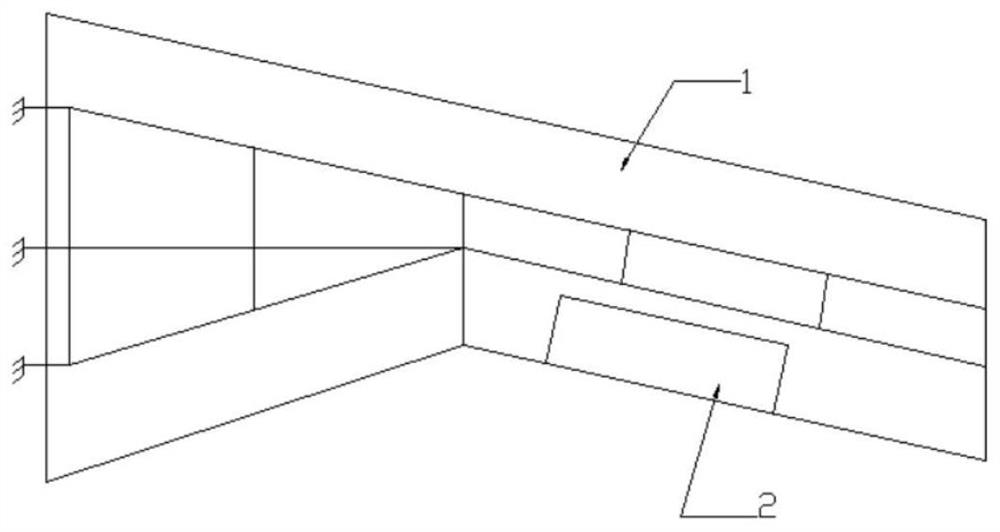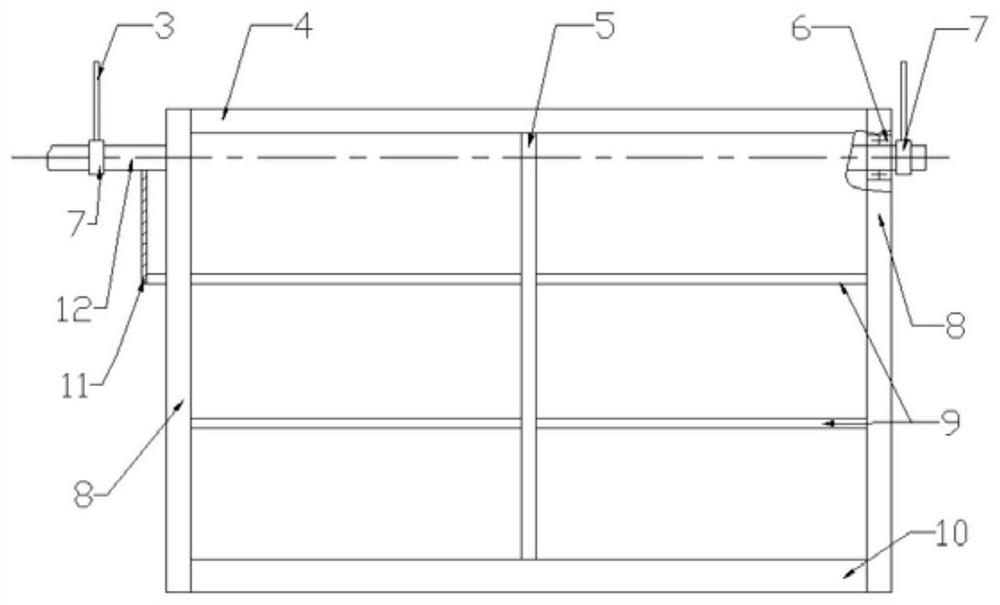A device for simulating the variation of drag rudder deflection angle and stiffness of tailless aircraft
A technology of tailless aircraft and stiffness change, which is applied in the direction of measuring devices, machine/structural component testing, aerodynamic testing, etc. It can solve the problems of not considering the rigid body model of elastic deformation, and there is no resistance rudder, so as to improve the design level Effect
- Summary
- Abstract
- Description
- Claims
- Application Information
AI Technical Summary
Problems solved by technology
Method used
Image
Examples
Embodiment 1
[0036] like Figure 1-9 As shown, a device for simulating the deflection angle and stiffness change of a tailless aircraft resistance rudder includes a basic model, a rudder surface model, a connecting device, a deflection angle control system and a stiffness control system, wherein: the basic model is selected as no The aeroelastic model of tail plane wing, i.e. wing 1; Described rudder surface model is resistance rudder 2, and described resistance rudder 2 comprises rudder leading edge 4 and rudder surface trailing edge 10, and described rudder leading edge 4 and rudder surface The two ends of trailing edge 10 are respectively connected by end frames 8 and dimension-shaped frames 5 on the left and right sides of the rudder surface; shaped frame 5, the rotating shaft 12 is sleeved on the connection support 7 located outside the end frame 8, and the connection support 7 is connected to the rear beam of the wing 1 through the connection support arm 3; the deflection control sys...
Embodiment 2
[0043]Since the separation vortex produced when the drag rudder is opened will directly affect the aeroelastic characteristics of the wing part where the rudder surface is located, the present invention can be used on the basis of the aeroelastic model of the wing to study the impact of drag rudders with different stiffnesses on the aircraft at different deflection angles. The influence of wing vibration characteristics.
[0044] A device for simulating the variation of drag rudder deflection angle and stiffness of tailless aircraft includes a basic model, a rudder surface model, a connecting device, a deflection angle control system and a stiffness control system. The basic model selects the aeroelastic model of the tailless aircraft wing, and the model adopts a structural dynamics similarity scheme to satisfy the aerodynamic shape, stiffness distribution and mass distribution similarity. The wing includes a beam frame, a dimensional frame and a skin, where: the stiffness of ...
Embodiment 3
[0051] In the embodiment, the wing span of the test model is determined according to the diameter of the test wind tunnel, and then the basic parameters of the model such as the stiffness scale and mass of the wing model are determined. According to the relative position of the drag rudder and the wing, the position of the rotation axis of the rudder surface and the plane size of the rudder surface can be determined.
[0052] Since the rudder surface is installed on the wing rear beam by means of the connecting device, the height of one end of the connecting support arm is determined according to the height of the wing rear beam. The chord length of the connecting support arm is determined according to the distance from the leading edge of the rudder to the rotating shaft, and then the height of the airfoil at the corresponding position is obtained from the length, and then the height of the other end of the connecting support arm is obtained. This essentially determines the d...
PUM
 Login to View More
Login to View More Abstract
Description
Claims
Application Information
 Login to View More
Login to View More - R&D
- Intellectual Property
- Life Sciences
- Materials
- Tech Scout
- Unparalleled Data Quality
- Higher Quality Content
- 60% Fewer Hallucinations
Browse by: Latest US Patents, China's latest patents, Technical Efficacy Thesaurus, Application Domain, Technology Topic, Popular Technical Reports.
© 2025 PatSnap. All rights reserved.Legal|Privacy policy|Modern Slavery Act Transparency Statement|Sitemap|About US| Contact US: help@patsnap.com



